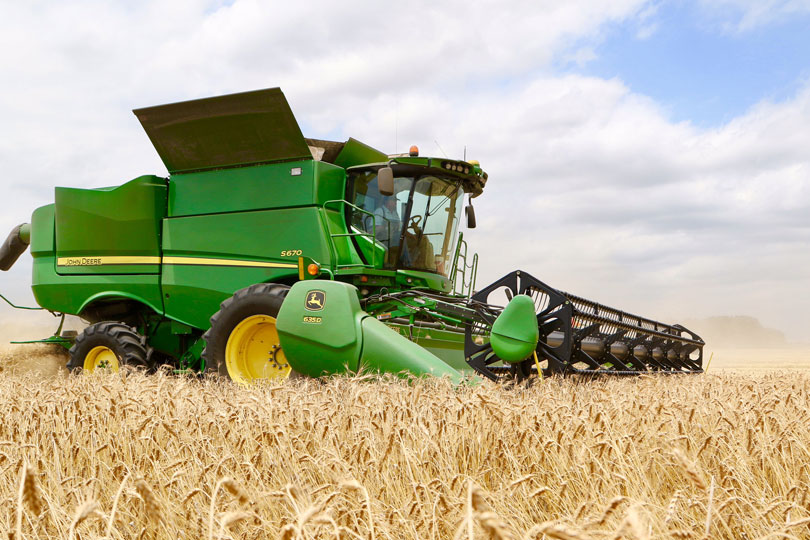By Julie Tomascik
Editor
A good crop, and not so good prices. That’s what many Texas wheat farmers are facing.
“The wheat crop this year is good for us so far. We’ve had 30-60 bushels per acre, which is average to a little above average in places,” said Jason Dieterich, who farms in Falls, McLennan and Limestone counties.
But the price he’s selling his wheat for just isn’t there.
“Prices are horrible,” he said. “Compared to years past when we were selling wheat for $8, and now we’re selling it for $4 to $4.50.”
Dieterich doesn’t see himself making much of a profit, if any, on this crop.
He’s not the only one. Farmers across the state are struggling to see wheat pencil out.
Ben Scholz has been growing wheat for more than 45 years. He’s seen his fair share of prices—the good and bad. But wheat prices this year are ugly.
“In the late ’70s and early ’80s, the prices were close to what they are now. But the input costs weren’t what they are now,” he said. “When you consider the input costs of a crop today compared to the value received, it’s the lowest I’ve ever seen in my career.”
At a rough estimate, Scholz says he’ll need about $6.50 to break even. And cash bids are ranging from $3.60-$3.90, according to the Texas Wheat Producers Association.
“There is no simple answer when we try to define the breakeven point for wheat production in Texas because our growing regions are so diverse,” Steele Fischbacher, director of Policy and Marketing with the Texas Wheat Producers Board and Association, said.
The low prices come at a time when farm income is down for the fourth year in a row. Texas farmers are facing tough times with all commodities, but especially wheat.
So what’s the fix?
Some say the cure for low prices is low prices.
“Part of the cure for our problem with wheat is low prices. That leads to fewer acres planted,” said Scholz, who farms in Collin and Hunt counties.
And that’s what happened this year.
Winter wheat acreage fell to its lowest levels since 1909.
“For the 2017 crop, we saw wheat acres in Texas and the U.S. drop dramatically. If wheat prices continue in the $3 range, we may see that decline continue, but it also depends on where competing commodity prices fall,” Fischbacher said. “Many wheat growers use the crop for grazing or have it as part of their rotations and will continue to plant wheat unless other crop prices become more attractive.”
A large wheat supply has also negatively impacted prices.
“We need to use the wheat we have on hand. Carryover stocks are extremely high around the world, which is feeding right into the fundamental supply and demand equation,” Fischbacher said. “Most economists are saying that we may not see a large swing in the market until there is a significant market disruption—either a political situation that impacts trade or a crop failure somewhere in the world.”
She noted four consecutive years of record world wheat production is expected to be broken this year. She estimates a drop of 15 million metric tons from the previous year.
But there is hope for farmers.
“If a producer knows that he has high protein wheat, he may be able to capture additional value in the market. But it usually means having to store and segregate that grain until the demand materializes,” Fischbacher said.
Farming is tough. And for some, like Scholz, that challenge is the driving force.
“That’s why I farm,” he said. “Now it’s a challenge to figure out what I have to do to make adjustments and face a banker and say here’s a projection for the next crop cycle.”
And many farmers will likely plant wheat again next year with faith and hope for better prices.
“The national trend has been for a long-term decline in wheat acres, but wheat holds a very important place in Texas as a dual purpose crop,” Fischbacher said. “The importance of wheat grazing, crop rotation and cover crops has kept our acres up more than in other states.”
Dieterich hopes to have amber waves of grain in his fields next year—that is, if Mother Nature cooperates.
“We’ll plant wheat again next year. I’ll have about 1,500 acres again,” Dieterich said. “Because it’s a low input cost crop and normally wheat is going to make a good crop. That helps take risk away from some of the other commodities we grow.”
There’s risk with


Honestly, isn’t that a common headline you read year after year? Good crop…poor prices. God Bless our Farmers!!!